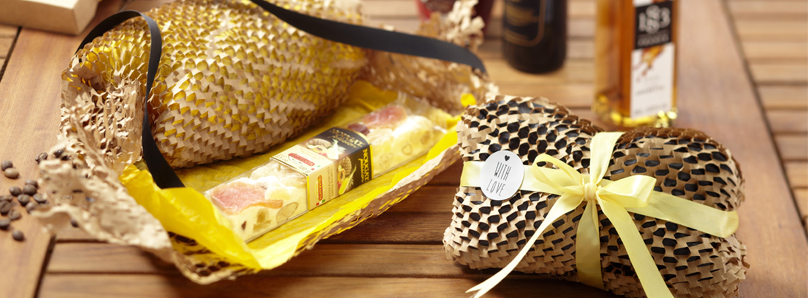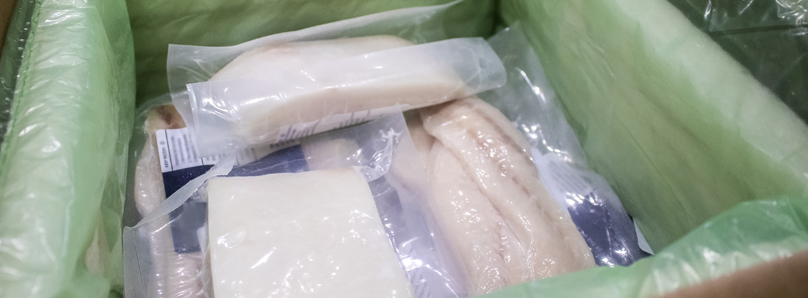Four packaging considerations for selling food online

Selling food online is different now. Before the pandemic, for most of us, online food shopping meant placing a grocery order on a supermarket website. Then waiting around for their delivery van to arrive at the chosen time.
But there has been a revolution in the way that consumers connect to food, as we look to enhance lifestyles and seek new experiences. Meal kits and local subscription deliveries have positively boomed in the past 18 months.
Artisan and small batch food producers have also flocked to specialist marketplaces that link local producers to national shoppers. A quick trawl through websites like Yumbles and The Food Market is enough to get you salivating at exotic delights. These treats, once denied to us by geography, can now be delivered directly to your doorstep.
If you are considering selling food products online and sending them through a courier or postal network, here are some tips to ensure that your delicious goodies arrive in perfect condition.

Make it a feast for the eyes
Hunger starts with the eyes, well probably technically your tummy but you know what we mean… Unboxing is a big part of our online buying experience, so if you’re selling food online, make sure your items arrive looking as good as they did on your website.
If your produce is coming into direct contact with your packaging, always ensure that packaging is food grade. And think about your food’s journey. Will your packaging protect it from all the bumps and scrapes it might face en route?
Consider the fragility of items – like pre-packed biscuits, glass jars or bottles – that are likely to crack or break on impact. You can ensure they will absorb shocks and knocks by wrapping them in Geami WrapPak®. It offers great protection and is pleasing on the eye too. Specialist jar and bottle packaging is also available in a range of materials, including Flexi-Hex®, Airsac® and Korrvu®.
If you are placing the items into an outer box, consider the use of coloured shredded tissue or woodwool. This enhances presentation, and items wrapped in tissue prolong the excitement of unboxing too.

Consider the changing temperatures en route
If goods are perishable, maintaining consistent temperatures in transit may be problematic. They will probably encounter more than one distribution warehouse and move between multiple vehicles before reaching their destination. If your product is temperature sensitive, you can stabilise their journey by using thermal insulated packaging.
If packed correctly, using suitable insulated packaging, your goods will remain within the desired temperature range for up to 48 hours. Thermal packaging, such as RecycoolMe and Coolimate, will help you achieve either ambient, warm or cold temperatures.
Maintaining a consistent temperature for chilled or frozen goods will require a coolant.

Have the right packing process for chilled goods
Temperature sensitive products must remain in the desired temperature range until the customer receives them. This makes it vital to control the packing process.
Have your packaging primed and ready to fill: pre-assembled and lined boxes; coolant and tape ready to hand. Being prepared in this way will minimise the time products sit, unrefrigerated, waiting to be packed.
Your chilled products should be packed within 20 – 30 minutes of being removed from cold storage. If the temperature of your products reduces significantly, there is a risk that it will warm the coolant temperature, which will reduce the viable transit time.
Filling all the gaps in a pack with void fill material will also help to maintain a low temperature. Place your coolant at the top of the pack, this allows the cool air to flow down onto the goods.
You need to keep your goods at the desired temperature for as long as possible. So, while they wait to be loaded into the delivery vehicle, keep them refrigerated or frozen.

Make sure that you use the right coolant for the desired temperature
When selling food online, you will need to achieve a range of temperatures. To achieve the target temperatures below, use the following coolants:
- Ambient goods – use ice sheets that have been conditioned to 20°C. They will help to prevent the temperature from rising or falling quickly
- Chilled goods – use ice sheets or gel packs
- Soft frozen goods – use gel packs or duration ice sheets
- Frozen goods – use dry ice
If you would like to find out more about protective and thermal insulated packaging, our team of experts are on-hand to help. Contact us today.

